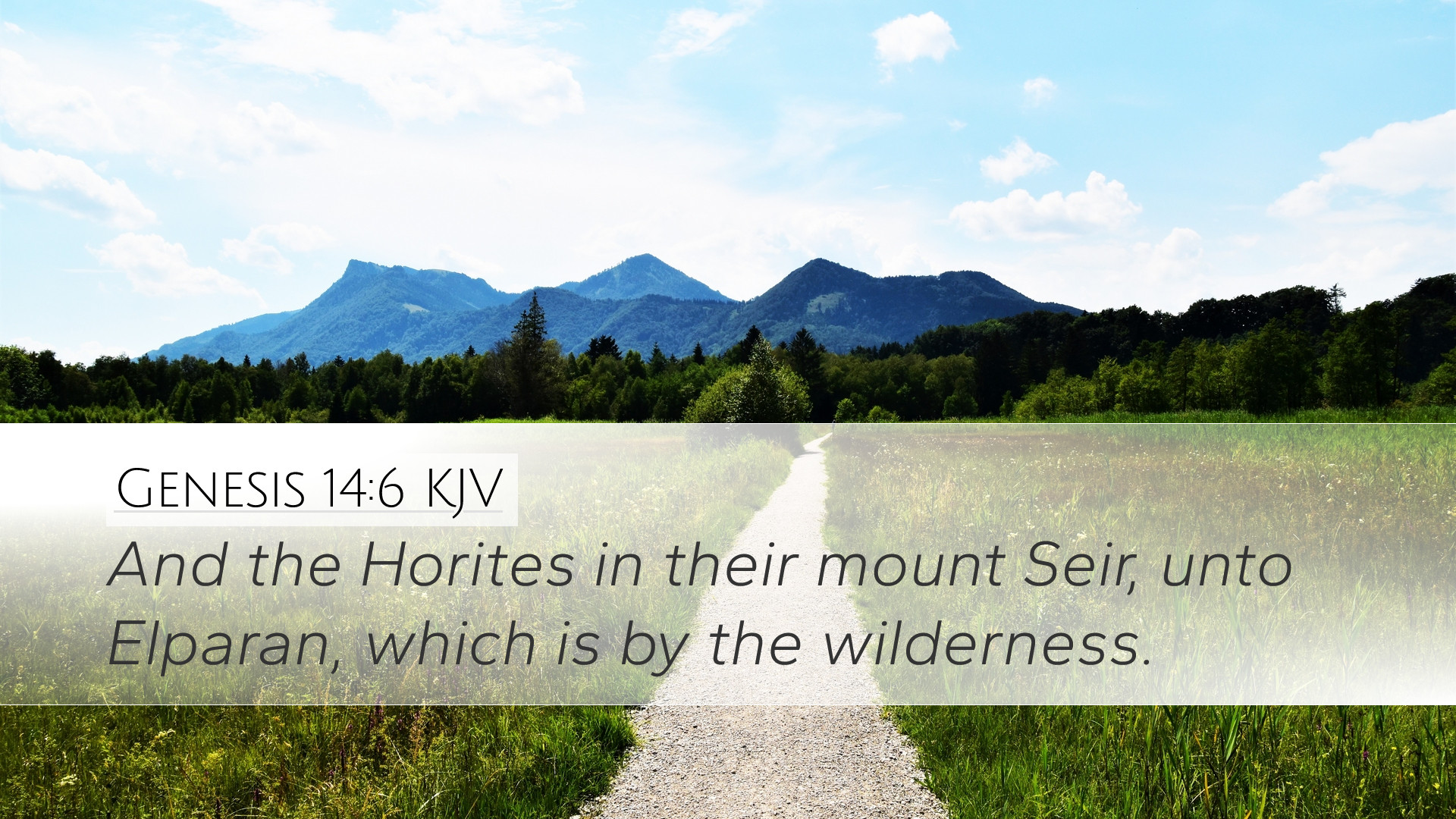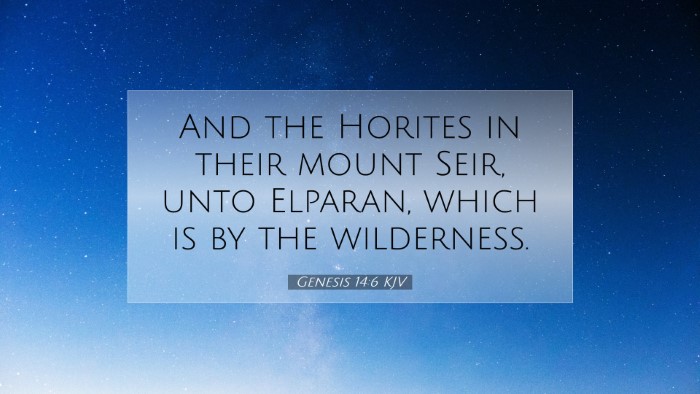Commentary on Genesis 14:6
Verse Context: Genesis 14:6 is set within a significant narrative of conflict and deliverance in the early patriarchal period of the Bible. This verse specifically mentions the involvement of certain peoples and geographical locales that are critical in understanding the historical and spiritual implications of the passage.
Text of Genesis 14:6
“And the Horites in their mount Seir, unto Elparan, which is by the wilderness.”
Overview of the Commentary
This commentary synthesizes insights from prominent public domain theologians such as Matthew Henry, Albert Barnes, and Adam Clarke. Each contributes a unique perspective to the understanding of Genesis 14:6, exploring the historical context, geographical significance, and the theological implications of this passage.
1. Historical Context
Matthew Henry's Insight: Henry emphasizes the background of this conflict involving the Horites who were the original inhabitants of mount Seir before the descendants of Esau. This details the wider narrative of the struggle for land and power among ancient peoples, illustrating the setting of God's unfolding plan through the patriarchs.
Albert Barnes's Perspective: Barnes reflects on the significance of the Horites. He notes that they were not mere geographical markers but represented the forces and nations opposing the line of Abraham's blessing. The mention of their location serves to highlight God's sovereignty in complex and hostile territories.
Adam Clarke's Commentary: Clarke provides an extensive examination of the Horites, detailing their likely descent and cultural background. He links them to the broader conflict narrative and points out that the presence of such groups in Scripture showcases the reality of God's provision in times of strife.
2. Geographical Significance
This verse speaks to the geographical details that lay out the narrative of Abraham and the historical context of the surrounding nations.
- Mount Seir: A significant landmark, this mountain range is often associated with Edom and was home to various tribes, thus marking the division between peoples and their allegiances.
- Elparan: A locality that lies on the borders of wilderness, symbolizing the transitions between civilization and the wild, a motif common in the stories of the patriarchs.
- The Wilderness: In biblical literature, the wilderness often represents a place of testing and divine encounter, underscoring themes of reliance on God amidst chaos.
3. Theological Implications
The underlying theological themes reflect God's provision, guidance, and the eventual fulfillment of His promises.
Divine Sovereignty: The gathering of nations and tribes illustrates God’s control over history and His plan to use Abraham as a channel of blessing in a hostile landscape. Both Henry and Clarke note that even the presence of adversarial groups serves God's narrative.
Faith Amidst Conflict: Henry's commentary points towards the role of faith in conflict. Abraham's willingness to pursue Lot despite the territorial dangers speaks to his allegiance to God's promises.
Symbol of Struggle: Barnes highlights that the mention of the Horites signifies the ongoing spiritual and moral struggles that believers face. This verse serves as a reminder that God's people often encounter opposition.
4. Lessons for Contemporary Believers
For today's pastors, students, theologians, and scholars, Genesis 14:6 offers potent lessons.
- Recognizing God's Presence: Just as Abraham was guided through foreign lands, believers are called to recognize the presence of God even in challenging circumstances.
- Embracing God’s Sovereignty: Understanding the broader historical and cultural nuances can help contemporary believers appreciate how God orchestrates events for His purposes.
- Faithfulness in Adversity: The story encourages followers to stand firm in faith during conflicts, drawing upon Abraham's example of pursuing righteousness amidst a chaotic world.
Conclusion
Genesis 14:6 provides a glimpse into the intricacy of God's plan during a time of turmoil for His chosen people. The insights drawn from the public domain commentaries of Matthew Henry, Albert Barnes, and Adam Clarke enrich the understanding of this verse, revealing layers of historical, geographical, and theological richness that resonate with the journey of faith today.


